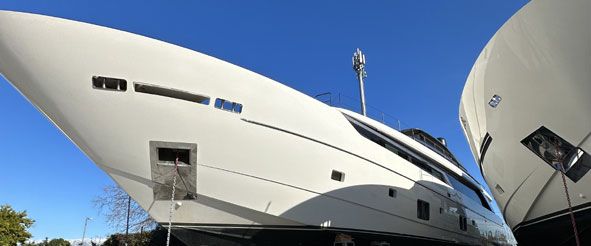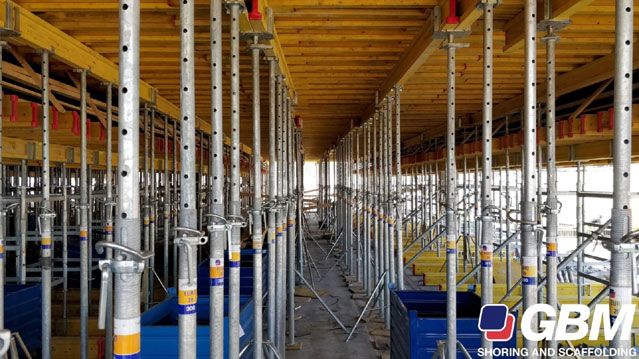Guide to the various types of cranes used on construction sites
Cranes are necessary for the lifting and moving of heavy loads and are absolutely fundamental for construction. In every construction site requiring working at height or having to move construction materials that would otherwise be immoveable, three types of cranes are most commonly used: the tower crane, self-erecting tower cranes and telescopic cranes.
Tower Cranes and their components
Tower cranes are the modern version of the classic crane. These types of cranes are usually fixed to the ground by either a concrete slab or by hooking the crane to another type of structure. Tower Cranes are characterized both by their elevation and lifting ability.
The base is fixed to the mast of the tower which determines the maximum operative height and allows the crane to rotate because it is fastened to the rotation unit.
The rotation unit consists of three main components: the operating arm (or 'jib' arm) or the long horizontal arm of the crane, the counter jib and the operator's cabin. The operating arm is the part of the crane that is responsible for the actual moving of the material while the counter jib balances the movement of the crane due to the counterweight which is usually made up of a cement block.
The control cabin, from which the operator controls the crane, is situated in different places of the crane depending on the model as well as the needs and structure of the worksite. It can be found either at the top of the tower on a rotating platform or it can be mounted on the arm or at the bottom of the tower.
Regardless of the model, tower cranes consist of the following components:
- MAST - the main support tower of a crane. Steel trusses, of which it is made of, are connected to each other when installing the crane.
- ROTATION UNIT - this is the motor that allows the crane to rotate.
- CONTROL CABIN - This is the cabin from which the crane is driven. It contains the operative commands and all of the instruments used to control it..
- JIB ARM - it extends horizontally from the crane and it can move both horizontally and vertically depending on the type of crane.
- FLY JIB – this is a counterweight support system.
- HOIST AND HOOK - These are the two components that are used to hook the heavy loads to the crane in order to lift them.
- COUNTERWEIGHTS - These components are fundamental because they keep the crane on its axis by maintaining the center of gravity in a suitable position which balances out the actual weight of the loads that are moved by the crane.
Self-erecting Tower Crane
This is the "mobile" and compact version of a tower crane. It usually consists of a single unit that can easily be moved on roads. These are cranes that have a lower rotation and have a closed arm configuration during the transfer of the crane. Once positioned at the worksite using hydraulic pistons, the arm extends thus enabling use thereof.
Due to the fact that they are simple and easy to use compared to traditional tower cranes, they are easier to use in constructions of considerable height. The counterweights and the ballast are located – as a single block - at the base of the arm and they usually do not require a sophisticated control cabin similar to those found in fixed tower cranes.
Telescopic Cranes
Also known as mobile cranes, telescopic cranes owe their name to the main feature of the arm which consists of tubes that are mounted one inside the another in series.
The tubes go from a compact configuration to an operative one thanks to a motor-driven mechanism which is capable of retracting or extending the position of the tubes in order to reach the desired length. The relative compactness of the arm makes this type of crane optimal for mobile use or use for short periods. These cranes are also ideal for constructing fixed structures.
Telescopic cranes are mounted on trucks, another feature which makes use and transfer thereof particularly quick and functional.
How to choose the right crane?
We – at GBM – strive to work hand in hand with our customers through all stages of their work. Our goal is to also help provide advice and assistance on which crane best fits your needs. Furthermore, besides new cranes, we - at GBM also second hand cranescranes which we guarantee are compliant to the technical standards of use.
Various services available on request also include assembly and assistance on site.
Ultimo aggiornamento:
News

BAUMA 2025 - 7-13 APRIL 2025

GBM's shipbuilding scaffoldings

Props required to sustain a slab: guidelines on how to establish distances, classes and quantities.
Контакти: Информация, цени и калкулации.
Желаете ли повече информация за продуктите GBM? Попитайте ни за всичко!
 Italiano
Italiano English
English Deutsch
Deutsch Français
Français Português
Português Polski
Polski Български
Български Română
Română Español
Español Русский
Русский Српски
Српски Hrvatski
Hrvatski Slovenski
Slovenski Shqip
Shqip Magyar
Magyar English (US)
English (US)